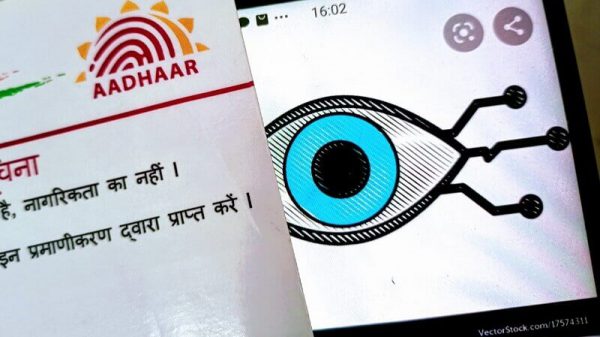The European Commission on June 3 proposed a framework for a European Digital Identity wallet which will be available to all European Union (EU) citizens, residents, and businesses and allow them to prove their identity and avail services across the Member States.
Last month, the United Nations Development Programme (UNDP) held a roundtable discussing why inter-governmental identity data sharing might be needed, what the current status is in this regard, and what will happen in the future. While other countries are currently more focused on how digital identity can be used within the country, the EU is the first international bloc to begin work on cross-border identification services.
Why have a European Digital Identity?
To address issues of existing identification services: The EU currently uses the European electronic identification and trust services initiative (eIDAS Regulation) for cross-border electronic identification. However, until now there was no regulation that required Member States to develop a national digital ID and to make it interoperable with one another. This has led to high discrepancies between countries and deprivation of the benefits of a single market.
Current eIDs also pose other limitations such as lack of flexibility to support a variety of use cases and complexity for online private providers to connect to the system. Currently, only about 60% of the EU population are able to use their national eID cross-border and only 14% of key public service providers accept these eIDs.
To achieve 2030 Digital Compass goals: By using the digital identity, the Commission envisions achieving many of the targets set in the 2030 Digital Compass. These targets include making available all key public services online, providing citizens access to electronic medical records; and enabling 80% of citizens to use an eID solution that is trusted and user-controlled. This initiative further supports the Union’s transformation towards a Digital Single Market.
Nation-specific practices create the risk of increased fragmentation: Acknowledging that citizens and businesses should benefit from the availability of secure and trustworthy digital identity, the commission states that this can only be facilitated at the EU level. The commission argued that national level practices would lead to increased fragmentation and prevent interoperability and cross-border acceptance.
The pandemic effect: The Commission also stated that the pandemic has increased the digitalisation of services, which in turn, has increased the demand by users and business for means to identify and authenticate online. The European Digital Identity will be able to securely and efficiently provide these authentication services.
Benefits outweigh costs: According to an impact assessment study conducted by the Commission, the costs of this project is estimated to be upwards of €3.2 billion, whereas the total quantifiable benefits have been estimated to be €3.9 billion – 9.6 billion.
What does the framework propose?
Amendment to eIDAS regulation: The European Digital Identity aims to address the points raised above by amending the eIDAS regulation “with the aim of improving its effectiveness, extend its benefits to the private sector and promote trusted digital identities for all Europeans.” This amendment will facilitate the development of the European Digital Identity.
Digital wallets: As part of the amended regulation, EU member states, either through public authorities or private entities, will offer citizens and businesses digital wallets that will link to their national digital identities. The wallet can also be used to store and share other official documents such as driving licence, diplomas, bank account, etc in electronic format.
Voluntary use: The commission has stated that the use of the European Digital Identity wallet will be voluntary and it will not replace existing national identities, but rather extend its functionalities by means of a digital wallet.
What can the European Digital Identity wallet be used for?
Prove identity and access services: “With the wallet, citizens will be able to prove their identity where necessary to access services online, to share digital documents, or simply to prove a specific personal attribute, such as age, without revealing their identity or other personal details,” the commissions stated. Examples include opening a bank account, applying for a loan, renting a car, submitting tax declarations, buying a new SIM card, and enrolling in a university.
According to Commission, some large platforms will be required to accept the use of European Digital Identity upon request of the user, but its security features will make it attractive for all private service providers to accept it for services that require authentication.
“The European digital identity will enable us to do in any Member State as we do at home without any extra cost and fewer hurdles. Be that renting a flat or opening a bank account outside of our home country. And do this in a way that is secure and transparent. So that we will decide how much information we wish to share about ourselves, with whom and for what purpose.” – Margrethe Vestager, Executive Vice-President for a Europe Fit for the Digital Age
What are the features of the European Digital Identity wallet?
The European Digital Identity will be —
- Available to any EU citizen, resident, and business who wants to make use of it
- Will be useable widely across the Union to either identify users or to prove certain personal attributes, for the purpose of access to digital services
- Will enable people to choose what they share with third parties with respect to their identity, data and certificates
- Will have high-level of security that will be set forth by the Member States in the standards, technical specifications and operational aspects and will be assessed within the European cybersecurity certification framework, as established by the Cybersecurity Act
“Every time an App or website asks us to create a new digital identity or to easily log on via a big platform, we have no idea what happens to our data in reality. That is why the Commission will propose a secure European e-identity. One that we trust and that any citizen can use anywhere in Europe to do anything from paying your taxes to renting a bicycle. A technology where we can control ourselves what data is used and how.” – Ursula von der Leyen, President of the European Commission, said in her State of the Union address on 16 September 2020
What are the next steps?
The Commission has asked all EU Member States to establish a common toolbox by September 2022 and to start the work on this immediately. The Commission has already provided a schedule with intermediary milestones. The Commission will work with the Member States on technical aspects of the European Digital Identity, while also parallelly working on the legislative process to enable this service.
The toolbox will cover the technical architecture, standards, and guidelines for best practices across four cross-cutting dimensions, and will be developed in coordination with the eIDAS expert group:
- Provision and exchange of identity attributes
- Functionality and security of the European Digital Identity Wallets
- Reliance on the European Digital Identity Wallet including identity matching
- Governance
What is the estimated budget?
The Commission estimates that the total financial resources necessary for the implementation of this project in the 2022-2027 period will be around €31 million, including €9 million of administrative costs and up to €22 million in operational spending covered by the Digital Europe Programme.















